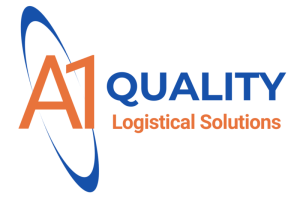A1 Quality Logistical Solutions

- By Haley
- September 4, 2025
Table of Contents
Key Highlights
- Specialized labor significantly streamlines the product liquidation process, improving efficiency within your supply chain.
- Partnering with a third-party logistics (3PL) provider offers access to trained teams and robust logistics operations.
- Effective liquidation strategies lead to substantial cost savings and higher recovery rates on excess inventory.
- Specialized labor ensures proper handling, sorting, and management of goods, from standard items to hazardous materials.
- Outsourcing liquidation helps minimize disruption to your core business activities and improves order fulfillment for remaining stock.
- Technology and workforce planning are crucial for optimizing liquidation and ensuring a smooth workflow.
Introduction
Dealing with excess or obsolete inventory is a common challenge that can strain your resources and impact your bottom line. An effective product liquidation strategy is essential for recovering value and clearing out space. However, managing this process in-house can disrupt your entire supply chain. This is where partnering with a specialized labor team or a third-party logistics provider becomes a game-changer. By outsourcing this complex task, you can ensure the process is handled efficiently, professionally, and with minimal disruption to your daily operations.
Understanding Product Liquidation in the United States
Product liquidation is the process of selling off excess, discontinued, or unwanted inventory for cash. In the United States, this is a critical component of supply chain operations for businesses of all sizes, from large retailers to small ecommerce businesses. The primary goal is to convert slow-moving assets into working capital quickly.
This process helps prevent inventory from becoming a financial drain due to storage costs and depreciation. For many companies, a well-managed liquidation is a strategic move to optimize the fulfillment process for new products and maintain a healthy cash flow. It allows you to make room for profitable inventory and adapt to changing market demands.

Defining Product Liquidation and Its Key Purposes
Product liquidation involves the disposal of inventory that is no longer selling or is taking up valuable warehouse space. This can include overstocked items, seasonal products, customer returns, or discontinued lines. The main purpose is not just to get rid of stock but to recover as much capital as possible from these assets. For any business owner, this is a crucial part of inventory management.
The key objectives behind liquidation are clear. Firstly, it generates immediate cash flow, which can be reinvested into more profitable areas of the business. Secondly, it frees up physical storage space, reducing warehousing costs. Effective liquidation contributes directly to cost savings and prevents the financial burden of holding onto unsellable goods.
Finally, it ensures your business remains agile. A third-party logistics (3PL) provider can be instrumental here. The term 3PL refers to outsourcing logistics services, such as warehousing and shipping, to an external company. They can manage the entire liquidation process, allowing you to focus on your core operations without getting bogged down by logistical complexities.
Major Industry Sectors Needing Liquidation Services
Liquidation is not limited to a single industry; it’s a common need across various sectors facing challenges with excess inventory. Companies in fast-paced industries, where trends change quickly, are particularly reliant on these services. Managing reverse logistics, such as customer returns, also creates a constant stream of products that may need to be liquidated.
A typical 3PL provider offers a wide range of services that are invaluable during liquidation. These can include transportation, warehousing, inventory management, order fulfillment, and returns management. For liquidation projects, their industry expertise is crucial for handling specific product types and maximizing recovery value. They manage the entire process, from sorting goods in their warehouse space to final distribution.
Several key sectors consistently require liquidation support:
- Electronics: Rapid technological advancements lead to older models becoming obsolete.
- Fashion and Apparel: Seasonal collections and fast-changing trends result in frequent overstock.
- Consumer Packaged Goods (CPG): Products with expiration dates require timely liquidation to avoid total loss.
- Retail: Both online and brick-and-mortar stores deal with returns and unsold seasonal items.
The Role of Specialized Labor in Product Liquidation
Product liquidation is more than just selling off old stock; it’s a complex logistical task that demands precision and expertise. Using specialized labor is key to navigating this process efficiently. These trained professionals understand the nuances of inventory sorting, valuation, and processing, ensuring that you get the best possible return on your assets.
This kind of dedicated labor support integrates seamlessly into your broader supply chain management strategy. Instead of pulling your regular staff away from their core duties, you can rely on an experienced team to handle the liquidation project from start to finish. This minimizes operational disruptions and ensures the process is executed according to best practices. Let’s explore who these specialists are and what skills they bring.

Who Qualifies as Specialized Labor in Liquidation?
Specialized labor in the context of liquidation refers to a team of trained professionals with specific experience in handling and processing excess inventory. These are not your typical warehouse workers; they possess skills tailored to the unique demands of liquidating goods. This includes everything from initial inventory assessment and sorting to packing and shipping.
Effective workforce planning is essential to assemble the right team for a liquidation project. The team might include inventory controllers who can accurately categorize products, quality assurance inspectors to assess the condition of items, and logistics coordinators to manage transportation. Their collective expertise ensures a streamlined and efficient process.
When you partner with a third-party logistics (3PL) provider, they handle warehousing and inventory management with sophisticated systems. For liquidation, their specialized labor uses advanced warehouse management software (WMS) to receive, sort, and track every item. This provides real-time visibility and control, ensuring that goods are stored correctly and prepared for their next destination, whether it’s a secondary market or a recycling facility.
Key Skills Required for Liquidation Labor Support
The effectiveness of a liquidation project hinges on the skills of the labor support team. These individuals need a unique blend of logistical knowledge and practical abilities to maximize efficiency and recovery value. Adhering to industry best practices is fundamental to their work, ensuring every step is handled professionally.
One of the main benefits of using a third-party logistics provider is gaining access to a team that already possesses these skills. They are proficient in using management software for inventory tracking, which is critical for maintaining accuracy throughout the fulfillment process. Their expertise translates directly into a smoother, faster liquidation.
Key skills required for a liquidation team include:
- Inventory Assessment: Accurately evaluating and categorizing large volumes of mixed stock.
- Sorting and Grading: Separating items based on condition, type, and potential resale value.
- Data Entry and Management: Proficient use of management software to track inventory levels.
- Efficient Packing: Preparing goods for shipment to various buyers or destinations securely.
- Regulatory Compliance: Understanding rules for handling specific items, such as electronics or hazardous materials.
Problem-Solving: Quickly addressing logistical challenges that arise during the process.
How Specialized Labor Improves Liquidation Efficiency
Leveraging specialized labor for product liquidation directly translates to greater efficiency and better outcomes. An experienced team can process inventory much faster than an untrained one, accelerating the entire timeline from sorting to sale. This speed is crucial for freeing up capital and warehouse space quickly, allowing your business to refocus on profitable activities.
Furthermore, a professional team enhances supply chain visibility throughout the liquidation project. They use systematic processes and technology to track every item, providing you with clear data on progress and recovery values. This level of control over your logistics operations ensures that nothing gets lost and that the project stays on schedule and within budget. Below, we’ll examine how this impacts inventory turnover and minimizes disruption.

Speeding Up Inventory Turnover
A primary goal of liquidation is to convert stagnant stock into cash as quickly as possible, and specialized labor is the catalyst for achieving this. By streamlining every step, from initial sorting to final shipment, these teams dramatically increase inventory turnover. Their familiarity with the process means less time is wasted, and goods are prepared for resale or disposal in record time.
This acceleration is particularly evident in order processing and shipping logistics. A dedicated team can efficiently manage bulk orders from secondary market buyers, ensuring that items are picked, packed, and dispatched without delay. This rapid fulfillment not only pleases buyers but also clears your warehouse faster, making way for new, profitable products.
So, when should a business consider partnering with a 3PL company for this? You should consider it when your in-house team is overwhelmed, liquidation costs are rising, or you lack the expertise to manage the process efficiently. If excess inventory is hindering your productivity or you are expanding into new markets, a 3PL can provide the necessary infrastructure and expertise to handle logistics effectively.
Minimizing Operational Disruption
One of the biggest risks of managing a large-scale liquidation in-house is the potential for significant operational disruption. Pulling your employees away from their primary responsibilities to sort and manage old inventory can slow down your core business, affecting everything from production to customer service. This can be especially damaging to your established business model.
By outsourcing to a specialized team, you create a clear separation between your daily operations and the liquidation project. The external team works independently, often in a designated area or at their own facility, allowing your staff to remain focused. This ensures that your standard logistics processes continue to run smoothly without interruption.
A 3PL provider can offer a comprehensive suite of services to support this. You can expect services like warehousing, transportation management, inventory control, order fulfillment, and reverse logistics. By handling these complex tasks, they prevent the liquidation project from becoming a distraction and ensure your business continues to operate at peak performance.
Common Challenges Faced During Product Liquidation
While product liquidation is a necessary part of supply chain management, it comes with its own set of challenges. Without the right approach, businesses can face logistical nightmares, financial losses, and compliance issues. The sheer volume of goods, coupled with the need for careful handling of certain items, can quickly overwhelm an unprepared team.
Proper logistics services and tools like warehouse management software are essential to navigate these hurdles. A specialized labor provider is equipped to handle these complexities, turning potential problems into manageable tasks. Let’s look at some of the most common challenges and how expert support can help overcome them.

Managing Large Volumes of Goods
One of the most immediate challenges in any liquidation project is dealing with the sheer volume of products. A sudden influx of excess inventory can quickly consume your available warehouse space, creating chaos and disorganization. Without adequate storage space and a system to manage it, items can get lost, damaged, or mixed up, leading to further losses.
This is where a professional team makes a significant difference. They bring a systematic approach to inventory management, using warehouse management software to log, track, and organize every item. This technology provides a clear overview of what you have and where it is, preventing the confusion that often accompanies large-scale liquidations.
For ecommerce businesses, a 3PL provider works by handling all backend logistics. They receive your inventory, store it in their fulfillment centers, and then pick, pack, and ship orders directly to your customers. This frees you from needing your own warehouse space and allows you to leverage their expertise in inventory control and shipping, ensuring a smooth process even when liquidating large volumes of stock.
Handling Hazardous or Specialty Items
Not all inventory is created equal. Liquidating hazardous items or specialty products adds a layer of complexity that requires specific expertise and strict adherence to regulations. Improper handling of these goods can lead to significant fines, safety risks, and environmental damage. Full compliance with local, state, and federal laws is non-negotiable.
A professional service provider with experience in this area is essential. They are trained in the correct procedures for identifying, segregating, and disposing of or reselling such items. This ensures the entire process is managed safely and legally, protecting your business from potential liability. Are there risks to using a 3PL? Yes, such as a loss of direct control or potential upfront costs.
However, the risk of mismanaging specialty items often outweighs the drawbacks of outsourcing. A qualified provider will have protocols for handling products like:
- Electronics: Containing materials that require special disposal (e-waste).
- Chemicals and Batteries: Classified as hazardous items with strict transportation and disposal rules.
- Pharmaceuticals: Requiring secure handling and chain-of-custody documentation.
- Perishable Goods: Needing temperature-controlled environments and rapid processing.
What Is a 3PL and How Does It Support Liquidation?
A 3PL, or third-party logistics provider, is a company that offers outsourced logistics services to help manage aspects of another company’s supply chain. In business, 3PL means partnering with an expert to handle functions like warehousing, transportation, and fulfillment. This partnership allows you to focus on your core competencies while professionals manage the complexities of your logistics.
During a product liquidation, a 3PL can be an invaluable asset. They provide the specialized labor, infrastructure, and technology needed to process large volumes of excess inventory efficiently. By taking over the entire liquidation process, from sorting and storage to shipping, a logistics provider ensures a smooth, cost-effective, and organized project.

Overview of Third-Party Logistics Providers
Third-party logistics providers are specialized companies that manage one or more facets of procurement and fulfillment. These logistics companies can offer a single service, like transportation, or a comprehensive bundle of services that cover the entire supply chain. Their role is to act as an intermediary, streamlining operations between a business and its customers or secondary market buyers.
Services offered by 3PLs are diverse. Some focus on transportation, acting as freight forwarders to negotiate shipping rates and routes. Others specialize in warehousing, providing space, inventory management, and order processing. For example, a publisher might hire a 3PL to handle its online order fulfillment and another to manage freight shipments.
3PLs handle warehousing and inventory management by using their own facilities and advanced software. They receive and store your inventory, and their systems provide real-time visibility into stock levels. This allows for accurate tracking, prevents stockouts, and optimizes storage, which is especially critical during a complex process like liquidation. Their expertise ensures that goods are managed efficiently from arrival to departure.
3PL vs. 4PL: What’s the Difference in Liquidation?
While a 3PL manages specific logistical functions, a 4PL, or fourth-party logistics provider, takes on a much broader role. A 4PL, also known as a lead logistics provider, manages the entire supply chain for a client, including overseeing various 3PLs. Essentially, a 3PL is a service provider, while a 4PL is a strategic partner that integrates and optimizes the complete supply chain.
In a liquidation context, a 3PL would execute the physical tasks: sorting, storing, and shipping the goods. In contrast, a 4PL would design the entire liquidation strategy, select the appropriate 3PLs for each task, manage all the vendors, and act as a single point of contact for you. The service levels are different, with a 4PL offering a more holistic, high-level management solution.
The choice between a 3PL and a 4PL depends on the scale and complexity of your needs. For a straightforward liquidation, a 3PL is often sufficient. For a complex, multi-faceted operation, a 4PL might be a better fit.
Feature | 3PL (Third-Party Logistics) | 4PL (Fourth-Party Logistics) |
Role | Manages specific logistical tasks (e.g., warehousing, shipping). | Manages the entire supply chain, including 3PLs. |
Scope | Operational and tactical focus. | Strategic and integration focus. |
Relationship | Service provider. | Strategic partner and single point of contact. |
Asset Ownership | Often owns physical assets like warehouses and trucks. | Typically non-asset-based; focuses on management. |
Services Offered by 3PLs for Liquidation Projects
When undertaking a product liquidation, partnering with a 3PL gives you access to a comprehensive range of logistics services designed to handle the project efficiently. These providers offer tailored fulfillment solutions that go far beyond simple storage. They manage the entire lifecycle of your excess inventory, from the moment it leaves your facility to its final destination.
Their distribution services are designed to move liquidated goods to various buyers, whether they are large wholesalers or individual consumers on secondary markets. This end-to-end management ensures a coordinated and streamlined process. Let’s explore some of the specific services they provide, such as warehousing, sorting, transportation, and distribution.

Warehousing, Sorting, and Inventory Control
A core service offered by 3PLs during liquidation is providing the physical space and organizational systems to manage your goods. They operate multiple warehouse locations, which can be strategically chosen to reduce transportation costs and speed up distribution to buyers. This immediate access to space prevents your own facilities from becoming clogged with excess stock.
Once the inventory arrives, their specialized teams begin the critical process of sorting and grading. This step is essential for maximizing recovery value, as items are categorized based on condition, type, and potential resale channel. They use a sophisticated order management system to log every item, providing you with real-time data on inventory levels and status.
This meticulous inventory control is a key service you can expect from a typical 3PL provider. It ensures complete visibility and accuracy, preventing loss or damage. By professionally managing your stock, they turn a chaotic pile of goods into an organized, trackable asset ready for efficient liquidation.
Transportation and Distribution Solutions
Getting liquidated products to their new owners is a critical final step, and 3PLs excel at providing efficient transportation and distribution solutions. They leverage their established networks and relationships with carriers to secure competitive shipping rates, which helps lower your overall shipping costs and protect your recovery margins.
Their expertise in transportation services means they can handle all types of shipments, from full truckloads to individual parcels. For ecommerce businesses, a 3PL works by seamlessly integrating with online sales channels to fulfill orders from liquidated stock. This ensures that even items sold on secondary marketplaces are shipped quickly and professionally.
3PLs optimize the entire distribution process by:
- Negotiating favorable shipping rates with multiple carriers.
- Selecting the most cost-effective transportation modes (e.g., road, rail, air).
- Managing all shipping documentation and customs clearance for international sales.
- Providing real-time tracking for all shipments, giving both you and the buyer visibility.
Consolidating shipments to reduce costs and improve efficiency.
Labor Allocation Strategies for Smooth Liquidation
A successful liquidation project depends on more than just having a team; it requires intelligent labor allocation. Effective workforce planning ensures that you have the right people with the right skills assigned to each task at the right time. This strategic approach is fundamental to labor optimization and achieving a seamless workflow.
Proper allocation prevents bottlenecks and keeps the project moving forward efficiently. As part of a broader supply chain management strategy, it ensures resources are used wisely to maximize returns and minimize costs. Below, we’ll examine how strategic planning, scheduling, and technology contribute to optimizing your liquidation labor force.

Workforce Planning and Scheduling
Effective workforce planning is the foundation of an efficient liquidation. It involves forecasting the labor needs for the entire project, from the initial intake of goods to the final shipment. This planning ensures that the fulfillment center is adequately staffed to handle peak workloads without being overstaffed during slower periods, thus controlling labor costs.
The typical process for onboarding with a 3PL begins with this planning phase. They assess the scope of your liquidation project and develop a detailed labor schedule. This schedule outlines which teams are needed for specific tasks—such as sorting, data entry, packing, and shipping—and when they are required. This prevents delays and ensures a continuous, smooth workflow.
Key elements of workforce planning and scheduling include:
- Initial Assessment: Determining the volume and type of inventory to be liquidated.
- Task Breakdown: Dividing the project into smaller, manageable tasks.
- Skill Matching: Assigning workers with the right skills to each task.
- Flexible Scheduling: Adjusting staffing levels based on the flow of goods and project deadlines.
Use of Technology for Labor Optimization
Technology is a powerful tool for labor optimization in any logistics operation, especially during liquidation. Advanced technology, such as warehouse management software (WMS), allows managers to assign tasks, monitor progress in real-time, and identify bottlenecks before they cause significant delays. This creates a more efficient and productive workforce.
This use of management software is central to how 3PLs handle warehousing and inventory management. The system can direct workers to specific locations for picking or sorting, track their productivity, and provide data for future planning. This level of automation and oversight reduces human error and ensures that labor is deployed where it is needed most.
By integrating this technology, you gain enhanced supply chain visibility into the liquidation process. You can see exactly how your labor resources are being utilized and make data-driven decisions to improve efficiency. This tech-driven approach ensures that the project is completed on time and with maximum cost-effectiveness.
Specialized Training for Liquidation Labor Teams
Simply having a team is not enough; they must be properly trained to handle the specific demands of product liquidation. Specialized training ensures that every worker understands industry best practices for efficiency, safety, and compliance. This is crucial for protecting the value of your inventory and minimizing risks throughout the process.
From safety protocols to precise warehouse management techniques, a well-trained team operates at a higher level of performance. This training covers all aspects of the job, ensuring that every task is executed correctly and professionally. Let’s delve into the specific training areas, including safety compliance and product handling procedures.

Safety Protocols and Compliance Requirements
Safety should always be the top priority in any warehouse environment, and liquidation projects are no exception. Specialized training must cover all relevant safety protocols to prevent accidents and injuries. This includes proper lifting techniques, equipment operation, and procedures for handling potentially hazardous items.
Meeting all compliance requirements is another critical aspect of training. Workers must be aware of regulations related to product disposal, especially for e-waste or chemicals. A thorough understanding of these rules is a key part of risk management, as it protects your business from fines and legal issues. While there are some risks to using a 3PL, like a loss of direct oversight, the benefit of their expertise in compliance often mitigates this.
Training programs should emphasize:
- Personal Protective Equipment (PPE): Proper use of gloves, safety glasses, and other gear.
- Hazardous Material Handling: Specific procedures for identifying, segregating, and managing regulated items.
- Emergency Procedures: What to do in case of a spill, fire, or other emergency.
- Ergonomics: Techniques to reduce the risk of strain and injury from repetitive tasks.
Best Practices in Product Handling and Processing
One of the main benefits of using a third-party logistics provider is their adherence to best practices in product handling and processing. Their teams are trained to treat your inventory with care to preserve its condition and maximize its resale value. This is especially important for fragile or high-value items that can be easily damaged.
Proper training in product handling ensures that items are sorted, stored, and packed in a way that prevents breakage, contamination, or degradation. This attention to detail extends to the entire order fulfillment process, ensuring that buyers receive their goods in the expected condition, which is crucial for maintaining a good reputation in secondary markets.
Best practices for product handling include:
- Gentle Sorting: Avoiding rough handling that could damage products or packaging.
- Proper Stacking: Ensuring pallets and boxes are stacked securely to prevent collapses.
- Appropriate Packaging: Using the right materials to protect items during transit.
- Climate Control: Storing sensitive items in appropriate temperature and humidity conditions.
- Systematic Organization: Keeping items organized to prevent loss and streamline picking.
Ecommerce Liquidation: Unique Needs and Opportunities
Liquidation for an ecommerce business presents a unique set of challenges and opportunities compared to traditional retail. The nature of ecommerce fulfillment, with its direct-to-consumer model, means that excess inventory often consists of a wide variety of individual items rather than bulk pallets. Managing this requires a different approach.
For an online store, maintaining a positive customer experience is paramount, even when dealing with liquidated stock sold on secondary platforms. A specialized labor provider can help navigate these complexities, turning the challenge of excess inventory into an opportunity to recover capital without damaging your brand’s reputation.

Online Retailers and Excess Inventory Management
Ecommerce businesses frequently face issues with excess inventory due to factors like high return rates, seasonal demand fluctuations, and the pressure to constantly introduce new products. For an online store, this slow-moving stock can tie up significant capital and take up valuable virtual and physical shelf space, hindering growth.
Effective inventory management is critical for online retailers to stay competitive. When inventory becomes obsolete, a swift and efficient liquidation process is necessary. This is where a 3PL partner becomes invaluable. A 3PL provider works with ecommerce businesses by taking over the entire backend logistics process, allowing them to scale without being bogged down by fulfillment complexities.
They can receive returned items, assess their condition, and process them for resale or liquidation. By managing this reverse logistics flow, they help ecommerce businesses keep their inventory lean and their operations focused on selling profitable products. This support is crucial for maintaining a healthy cash flow and an organized online store.
Reverse Logistics and Returns Assistance
Reverse logistics, the process of managing returns from customers, is a major operational challenge for ecommerce businesses. A high volume of returns can quickly create a backlog of inventory that needs to be inspected, sorted, and either restocked or liquidated. Handling this efficiently is key to minimizing losses and keeping customers happy.
Partnering with a 3PL for returns assistance can transform this process. You can expect a 3PL provider to offer comprehensive services for managing your returns. They receive returned customer orders at their facility, inspect the items according to your criteria, and process them accordingly. This might involve repackaging and restocking like-new items or channeling damaged goods into the liquidation stream.
By outsourcing reverse logistics, you ensure that returns are handled quickly and professionally. This frees up your team to focus on fulfilling new orders and provides a much better experience for customers who need to make a return. It turns a potential logistical headache into a streamlined, efficient operation.
Evaluating Potential Liquidation Labor Providers
Choosing the right service provider for your liquidation project is a critical decision that will directly impact its success. You need a partner with a proven track record of delivering results and the right industry expertise to handle your specific products. A thorough evaluation process is essential to ensure you find a reliable and competent team.
Don’t just look at the price; consider their experience, credentials, and reputation. A provider with deep knowledge of your market will be better equipped to maximize your recovery value. Let’s explore what to look for, from certifications to case studies, to help you make an informed choice.

Credentials and Industry Certifications to Look For
When you are trying to choose the best 3PL provider for your business, one of the first things to check is their credentials. Industry certifications are a strong indicator that a service provider is committed to quality, safety, and compliance. These certifications demonstrate that the provider has met rigorous standards set by independent organizations.
Look for providers who can show proof of relevant certifications for your industry. For example, if you are liquidating electronics, a provider with an R2 (Responsible Recycling) or e-Stewards certification is essential for ensuring proper e-waste handling. Verifying these credentials helps you vet potential partners and ensure they can manage your project legally and responsibly.
Key credentials to look for include:
- ISO 9001: A certification for quality management systems, indicating a commitment to consistent service.
- Industry-Specific Certifications: Such as those for handling food-grade, medical, or hazardous materials.
- Security Certifications: Like C-TPAT (Customs Trade Partnership Against Terrorism) if international shipping is involved.
- Proof of Insurance and Licensing: Essential for protecting your business from liability.
Assessing Provider Track Records and Case Studies
Beyond credentials, a provider’s track record is one of the most important factors to consider when choosing the best 3PL provider for your business. You want a partner who has a history of successful liquidation projects, preferably with businesses similar to yours. Ask for references and speak to their previous clients to get a firsthand account of their performance.
Reviewing case studies is another excellent way to assess their capabilities. Case studies provide concrete examples of the challenges they have faced, the solutions they implemented, and the results they achieved for their clients. Look for specifics on recovery rates, project timelines, and how their work positively impacted the client’s bottom line.
A provider who is transparent about their past performance and can share success stories is likely confident in their ability to deliver. This due diligence ensures you are partnering with a team that can not only handle the logistics but also help you achieve your financial goals for the liquidation.
Steps to Onboard Specialized Labor for Liquidation
Once you have selected a specialized labor provider, the next step is a structured onboarding process. This ensures that the new team is fully aligned with your goals and can integrate seamlessly into your operations. A well-planned onboarding is crucial for a smooth and successful project launch.
The process typically involves an initial assessment, clear goal setting, and comprehensive training to ensure everyone is on the same page. Proper workflow integration is key to making the partnership work from day one. Let’s break down these essential steps to get your liquidation project started on the right foot.

Initial Assessment and Goal Setting
The typical process for onboarding with a 3PL or specialized labor provider begins with a thorough initial assessment. During this phase, the provider will work with you to understand the full scope of the project. This includes evaluating the volume, type, and condition of the inventory to be liquidated.
Based on this assessment, the next step is collaborative goal setting. It is crucial to establish clear, measurable objectives for the project. This involves defining what success looks like, whether it’s maximizing financial recovery, clearing warehouse space by a certain date, or achieving specific service levels for buyers of the liquidated stock.
These goals form the foundation of the partnership and guide all subsequent actions. Key activities in this stage include:
- Inventory Audit: A detailed review of all items slated for liquidation.
- Defining KPIs: Establishing key performance indicators to measure success.
- Setting Timelines: Creating a realistic schedule for the project from start to finish.
- Agreeing on Service Levels: Clarifying expectations for communication, reporting, and performance.
Training and Workflow Integration
After setting goals, the focus shifts to training and workflow integration. When you onboard a specialized labor team, you should expect them to learn about your specific products and any unique handling requirements. While they bring general expertise, this tailored training ensures they understand your particular needs.
A critical part of this phase is workflow integration, especially concerning technology. The provider’s team will need to be integrated with your systems, or you will need to be onboarded onto their management software. This ensures that data flows seamlessly between your two organizations, providing real-time visibility into the liquidation process.
This integration is key to a smooth partnership. It allows for efficient communication, accurate reporting, and coordinated efforts between your in-house team and the external labor force. Proper training and system integration prevent misunderstandings and ensure the project runs efficiently from the very beginning.
Benefits of Dedicated Labor Support in Liquidation
Using a dedicated labor team for your product liquidation offers numerous benefits that directly impact your bottom line and operational efficiency. These teams bring a level of focus and expertise that an in-house team, juggling multiple responsibilities, simply cannot match. This leads to significant cost savings and better overall results.
Beyond the financial advantages, dedicated support also improves the execution of your logistics operations. This professionalism can even enhance customer satisfaction for those who purchase the liquidated goods, protecting your brand reputation. Let’s explore the key benefits, including reduced costs and improved risk management.

Reduced Costs and Increased Recovery Rates
One of the primary benefits of using a third-party logistics provider or specialized labor is the potential for significant cost savings. By outsourcing, you avoid the expenses associated with hiring and training temporary staff or diverting your permanent employees from their regular duties. The provider’s efficiency also means the project is completed faster, reducing ongoing storage and labor costs.
Furthermore, an experienced team is skilled at maximizing recovery rates. They know how to properly grade inventory and identify the most profitable sales channels for different types of products. Their expertise in negotiation and market knowledge helps ensure you get the best possible price for your excess stock.
This combination of lower operational costs and higher returns has a direct positive impact on your bottom line. It turns a potential financial loss into a valuable recovery effort, helping to offset the initial investment in the goods and improve your overall financial health.
Enhanced Compliance and Risk Management
Navigating the complex web of regulations associated with product disposal and resale is a major challenge in liquidation. A dedicated labor provider brings deep expertise in compliance, ensuring that every step of the process adheres to legal and environmental standards. This is a crucial aspect of risk management.
While there are some potential drawbacks to using a 3PL, such as reduced direct control, the benefit of their compliance expertise often outweighs this risk. They use management software to document every action, creating a clear audit trail that demonstrates due diligence. This protects your business from fines, legal action, and reputational damage.
A specialized team enhances compliance and risk management by:
- Ensuring Proper Disposal: Following all regulations for hazardous or e-waste materials.
- Maintaining Documentation: Keeping detailed records for compliance and auditing purposes.
- Adhering to Safety Standards: Implementing strict safety protocols to prevent workplace accidents.
- Managing Data Security: Securely wiping data from electronic devices before resale or disposal.
Measuring Success in Product Liquidation Projects
To ensure your liquidation project is delivering the desired results, you need a clear way to measure its success. This involves establishing key performance indicators (KPIs) and tracking them throughout the process. Measurement is a fundamental part of effective supply chain management and is essential for accountability.
By monitoring performance, you can identify areas for continuous improvement and make data-driven decisions to optimize the outcome. This ensures that your partnership with the labor provider is effective and that you are achieving your financial and operational goals. Let’s look at the specific metrics you should track.

KPIs and Performance Metrics
Establishing clear KPIs and performance metrics is essential for evaluating the effectiveness of your liquidation project. These metrics provide objective data on how well the project is meeting its goals. One of the main benefits of using a third-party logistics provider is that they are accustomed to being measured by such standards and can often provide detailed reporting.
These KPIs should cover both financial and operational aspects of the project. Financial metrics will tell you if you are achieving your recovery goals, while operational metrics will measure the efficiency of the process. Tracking these helps ensure that tasks like order fulfillment for liquidated goods are being handled effectively.
Key KPIs and performance metrics to monitor include:
- Cost Recovery Rate: The percentage of the inventory’s original cost recovered through sales.
- Sell-Through Rate: The percentage of liquidated inventory sold within a specific timeframe.
- Average Selling Price (ASP): The average price at which items are sold.
- Processing Time: The time it takes from receiving inventory to making it available for sale.
- Order Accuracy Rate: The percentage of orders shipped correctly to buyers.
- Total Project Cost: The overall cost of the liquidation, including labor, storage, and shipping.
Continuous Improvement and Feedback Loops
Measurement is not just about final results; it’s a tool for continuous improvement. By regularly reviewing performance metrics, you and your labor provider can identify opportunities to make the process more efficient and effective. This commitment to ongoing optimization is a key factor to consider when you choose the best 3PL provider for your business.
Establishing regular feedback loops is crucial for this process. Schedule periodic meetings with your provider to discuss progress, review performance against KPIs, and address any challenges that have arisen. This collaborative approach ensures that both parties are aligned and working toward the same goals.
This focus on improvement extends to customer service as well. Feedback from buyers of the liquidated stock can provide valuable insights into the process. A provider that actively seeks and acts on feedback demonstrates a commitment to partnership and excellence, ensuring that each project is more successful than the last.
Conclusion
In conclusion, streamlining product liquidation with specialized labor support is essential for enhancing efficiency and achieving better outcomes. This approach not only accelerates inventory turnover but also minimizes operational disruption, addressing the inherent challenges that come with managing large volumes of goods. By leveraging the expertise of specialized labor, businesses can ensure compliance with safety protocols, enhance risk management, and ultimately improve recovery rates. Investing in dedicated labor support equips organizations to navigate the complexities of liquidation, making it a strategic component of their overall operations. If you are seeking to optimize your liquidation processes, don’t hesitate to get in touch for a free consultation with our experts.
Frequently Asked Questions
Are there differences between liquidation services for ecommerce and traditional retail?
Yes, the business model dictates the approach. Ecommerce fulfillment often involves processing a high volume of individual returns and varied items from an ecommerce store. Traditional retail liquidation may deal with bulk pallets from a few locations. The fulfillment strategy must be tailored by the service provider accordingly.
What should I expect during onboarding with a specialized labor team?
During onboarding with a specialized labor team, expect an initial assessment of your inventory, collaborative goal-setting, and training on your specific products. The process will focus on workflow integration with your systems, establishing clear communication channels for customer support, and aligning on best practices for the project.

Haley serves as the Marketing Manager for A1 Quality Logistical Solutions. She joined A1QLS in 2023 with her prior experience gained with GXO and XPO Logistics.
